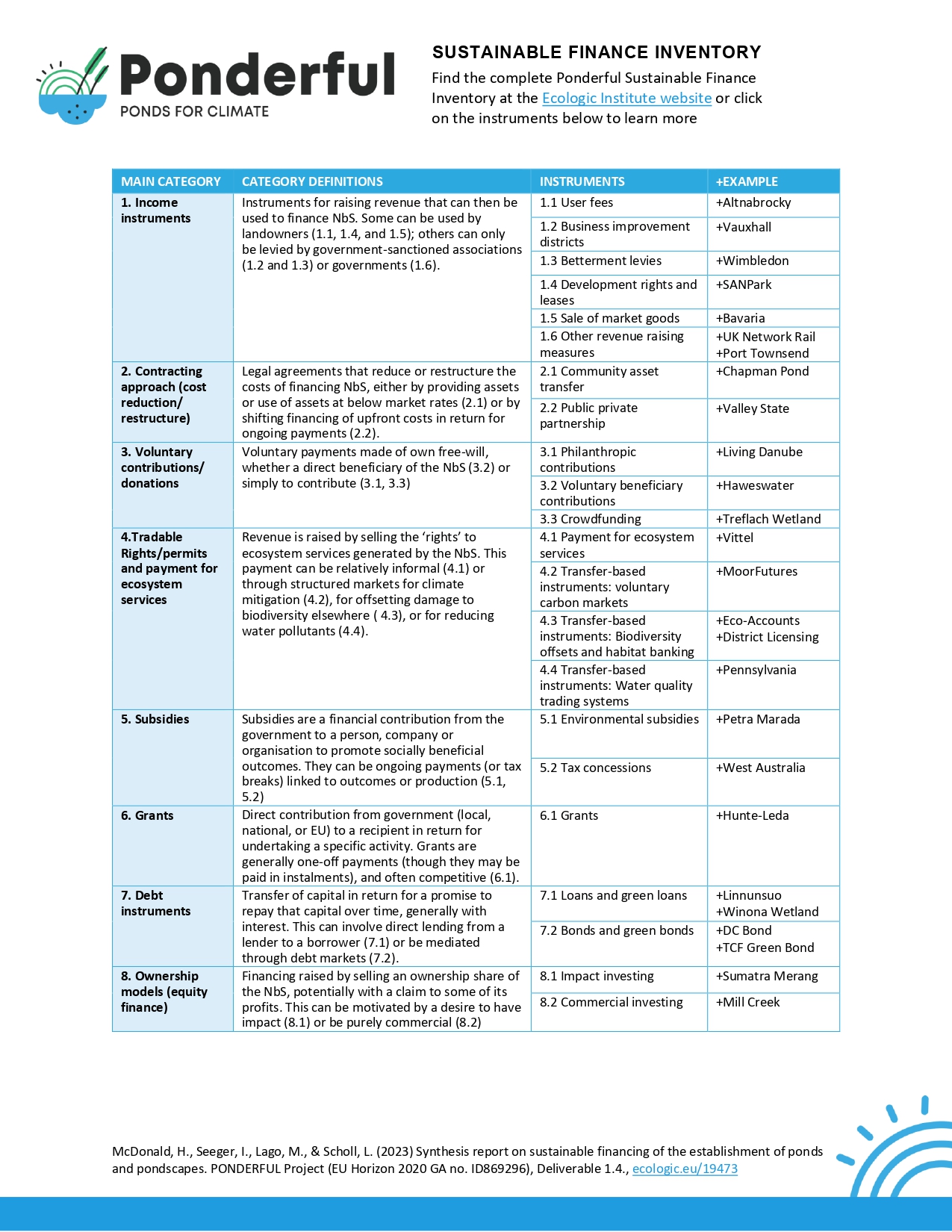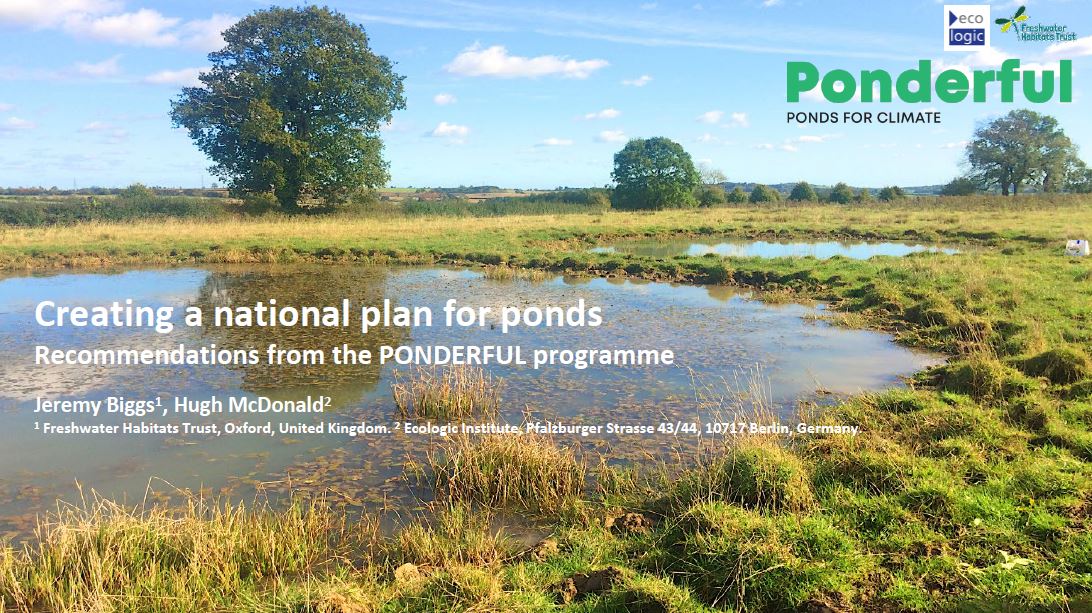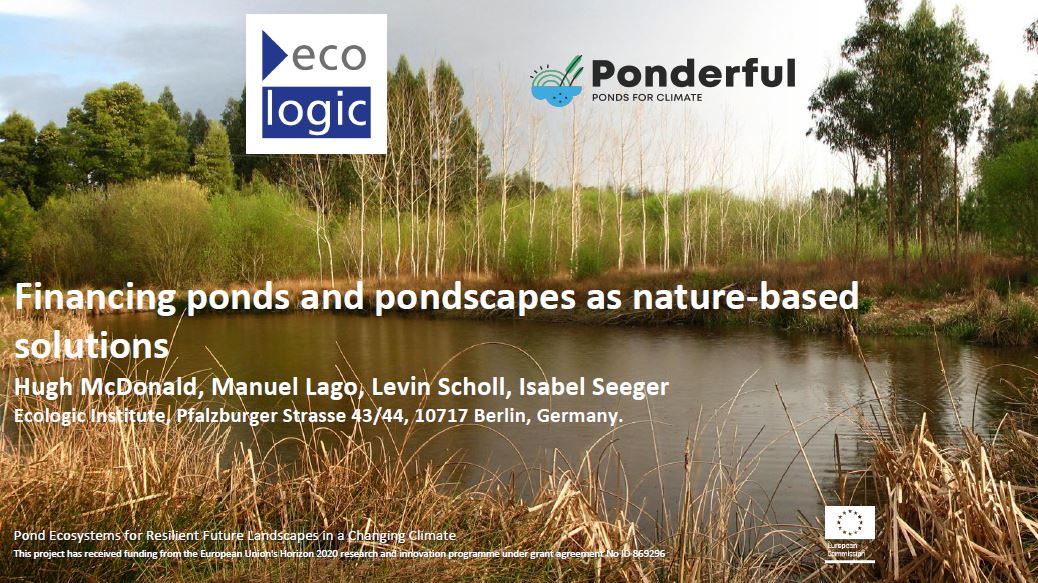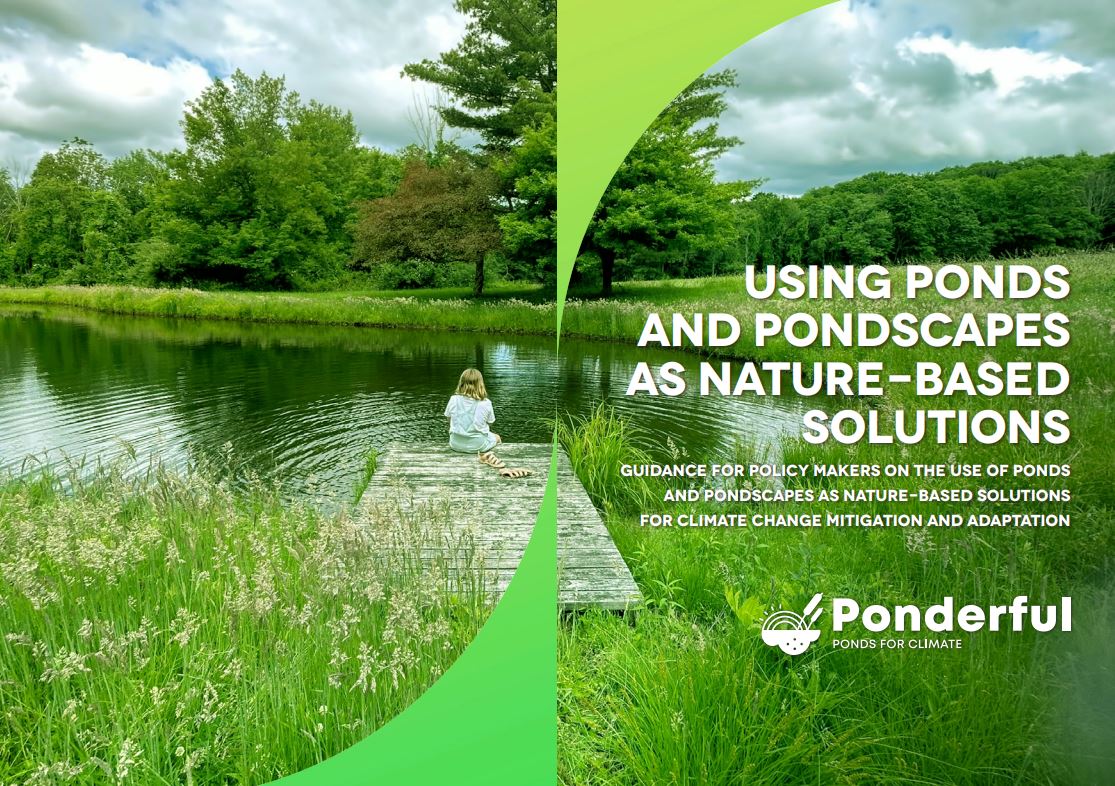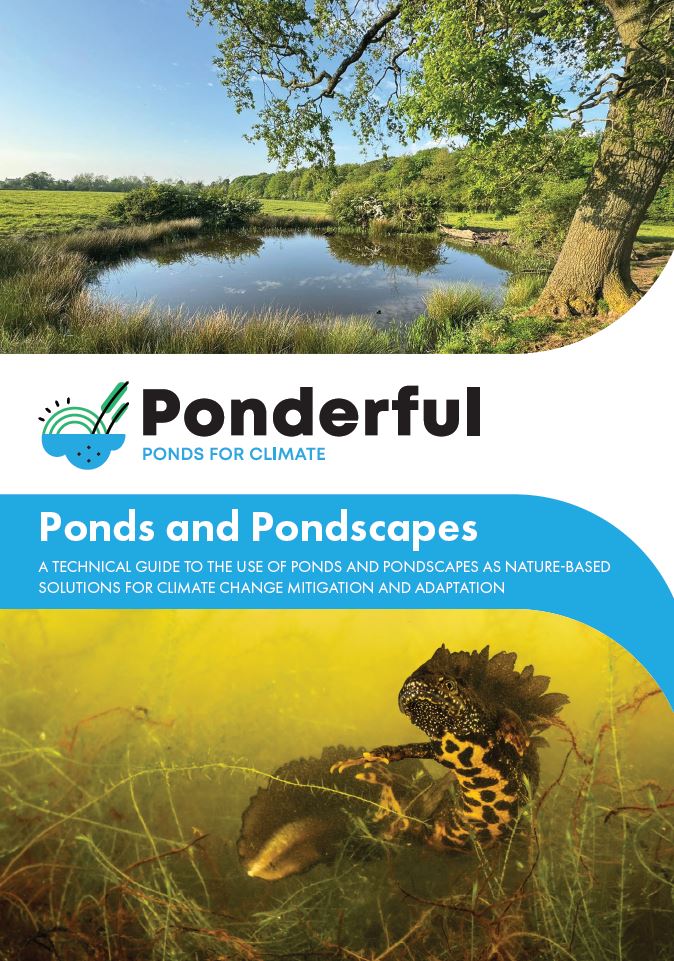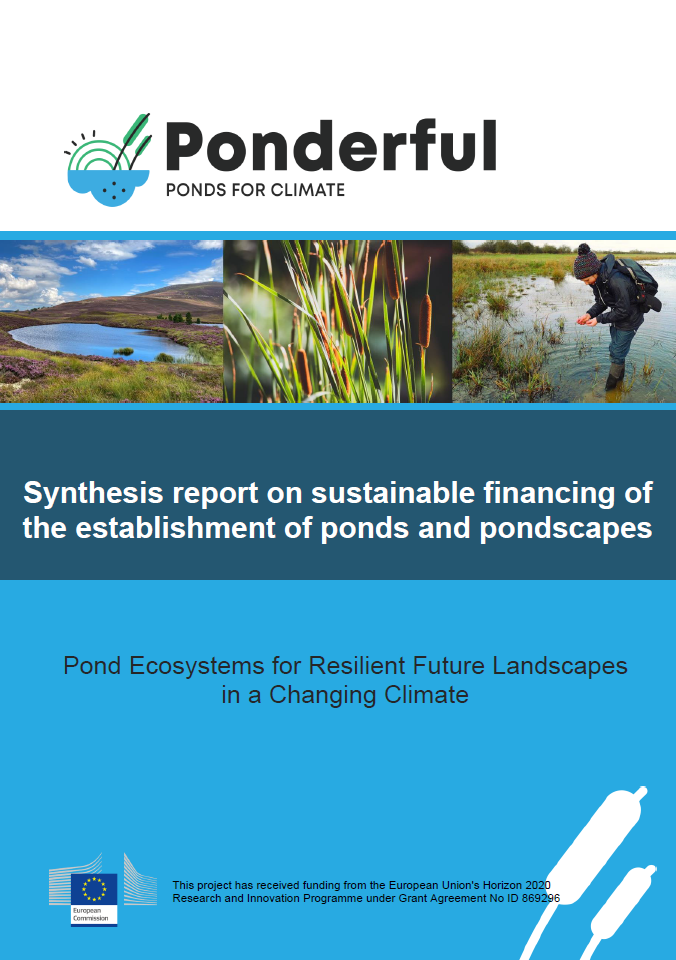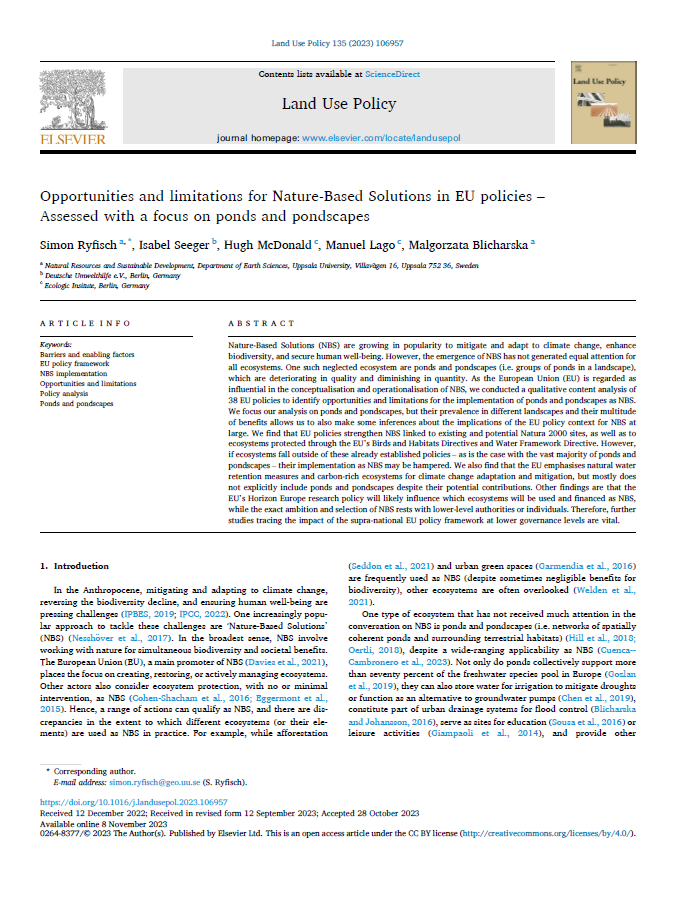Nature-based Solutions Sustainable Financing Inventory
- Publication
- Citation
McDonald, H., Seeger, I., Lago, M., & Scholl, L. (2023) Synthesis report on sustainable financing of the establishment of ponds and pondscapes. PONDERFUL Project (EU Horizon 2020 GA no. ID869296), Deliverable 1.4.
The PONDERFUL Sustainable Finance Inventory (below) consists of a total of 22 financing instruments for nature-based solutions (NBS). Each instrument is matched by at least one concrete example of the financing instrument in action. Different financing instruments have different strengths and weaknesses, making them more or less appropriate for different contexts and actors. The Inventory aims to support pondscape developers to understand financing options and identify the finance instruments best suited to their pondscape NBS project.
- Click on instruments below to learn about each financing instrument, and see relevant examples
- Download the PONDERFUL Excel-based selection tool, which supports nature-based solution project developers to evaluate their needs and identify appropriate financing instruments
1. Income Instruments
Instruments for raising revenue that can then be used to finance NBS. Some can be used by landowners (1.1, 1.4, and 1.5) others can only be levied by government-sanctioned associations (1.2 and 1.3) or governments (1.6)
1.1 User Fees: Altnabrocky River
1.2 Business improvement districts: Vauxhall Missing Link
1.3 Betterment levies: Wimbeldon and Putney Commons
1.4 Development rights and leases: SANPark concessions for tourism
1.5 Sale of market goods: Carp Ponds in Bavaria, Germany
1.6 Other revenue raising measures: UK Network Rail Port Townsend water utility fee
2. Contracting approach (cost reduction/restructure)
Legal agreements that reduce or restructure the costs of financing NBS, either by providing assets or use of assets at below market rates (2.1) or by shifting financing of upfront costs in return for ongoing payments (2.2)
2.1 Community asset transfer: Chapman's Pond community Company
2.2 Public private partnership: Valley State Parks Camping Concesssion
3. Voluntary contributions/donations
Voluntary payments made of own free-will, whether a direct beneficiary of the NBS (3.2) or simply to contribute (3.1, 3.3).
3.1 Philanthropic contributions: The Living Danube Partnership
3.2 Voluntary beneficiary contributions: Wild Haweswater - contribution
3.3 Crowdfunding: Treflach Wetland UK – crowdfunding: Treflach Wetland UK
4. Tradable rights/permits and payment for ecosystem services
Revenue is raised by selling the ‘rights’ to ecosystem services generated by the NBS. This payment can be relatively informal (4.1) or through structured markets for climate mitigation (4.2), for offsetting damage to biodiversity elsewhere (4.3), or for reducing water pollutants (4.4).
4.1 Payment for ecosystem services: Vittel (Nestlé Waters) PES
4.2 Transfer-based instruments: voluntary carbon markets: MoorFutures
4.3 Transfer-based instruments: Biodiversity offsets and habitat banking: Eco-Accounts biodiversity offset; Great Crested Newts ‘District Licensing’
4.4 Transfer-based instruments: Water quality trading systems: Pennsylvania nutrient credit trading
5. Subsidies
Subsidies are a financial contribution from the government to a person, company or organisation to promote socially beneficial outcomes. They can be ongoing payments (or tax breaks) linked to outcomes or production (5.1, 5.2).
5.1 Environmental subsidies: Ecofarm Petra Marada – CAP subsidies
5.2 Tax concessions: Western Australia Conservation Covenant
6. Grants
Direct contribution from government (local, national, or EU) to a recipient in return for undertaking a specific activity. Grants are generally one-off payments (though they may be paid in instalments), and often competitive (6.1).
6.1 Grants: Hunte-Leda-Moorniederung
7. Debt instruments
Transfer of capital in return for a promise to repay that capital over time, generally with interest. This can involve direct lending from a lender to a borrower (7.1) or be mediated through debt markets (7.2).
7.1 Loans and green loans: Linnunsuo – Rewilding Europe Capital loan CWS Revolving Fund – Winona Wetlands
7.2 Bonds and green bonds: DC Water Environmental Impact Bond; The Conservation Fund’s Green Bond
8. Equity finance
Financing raised by selling an ownership share of the NBS, potentially with a claim to some of its profits. This can be motivated by a desire to have impact (8.1) or be purely commercial (8.2).
8.1 Impact investing: Sumatra Merang Peatland Restoration Project
8.2 Commercial investing: Mill Creek Mitigation Bank
